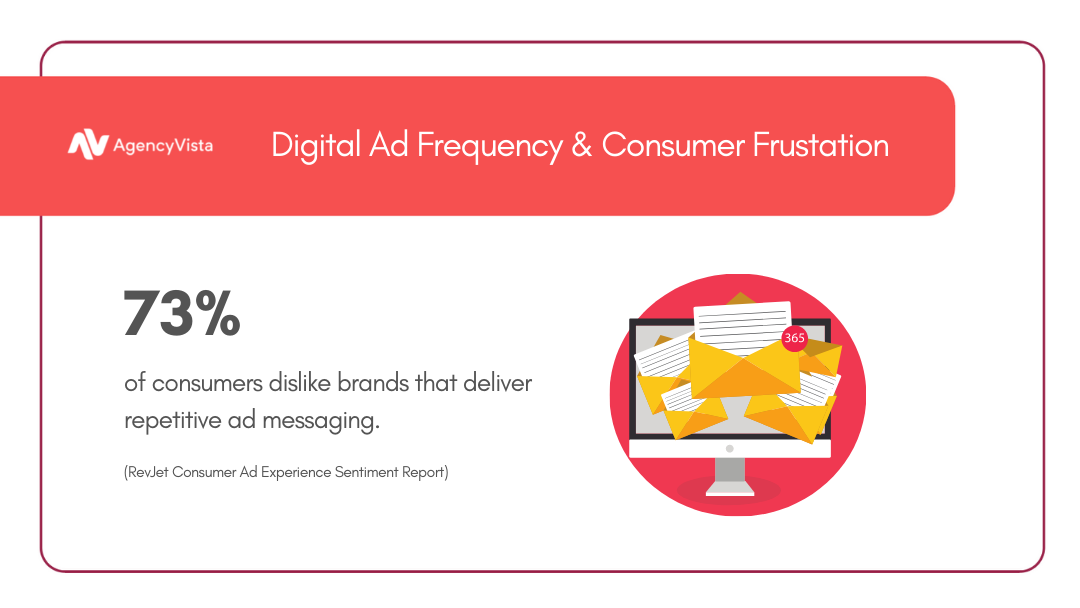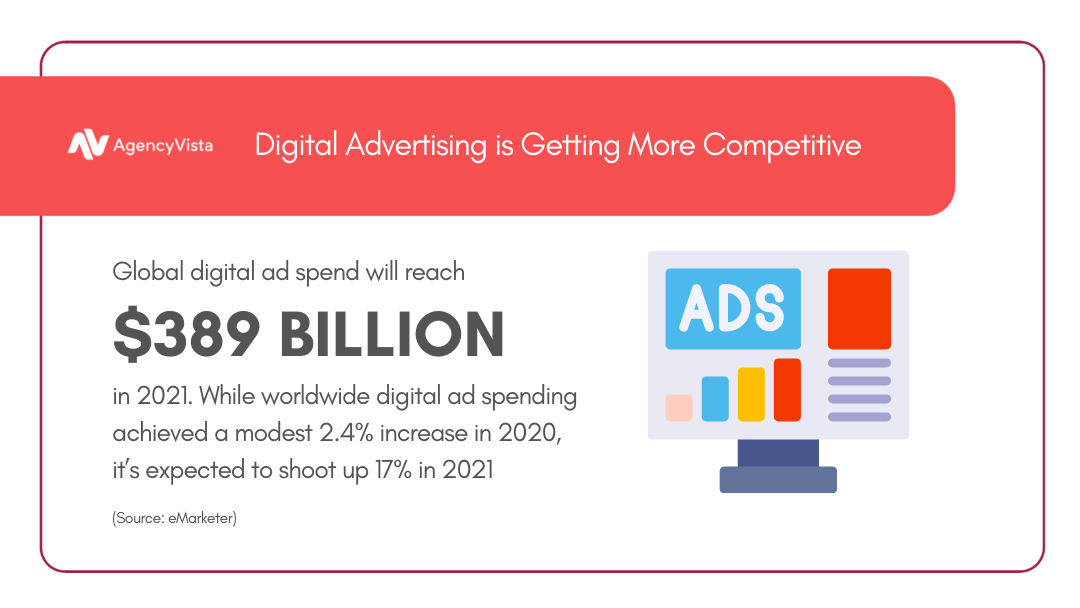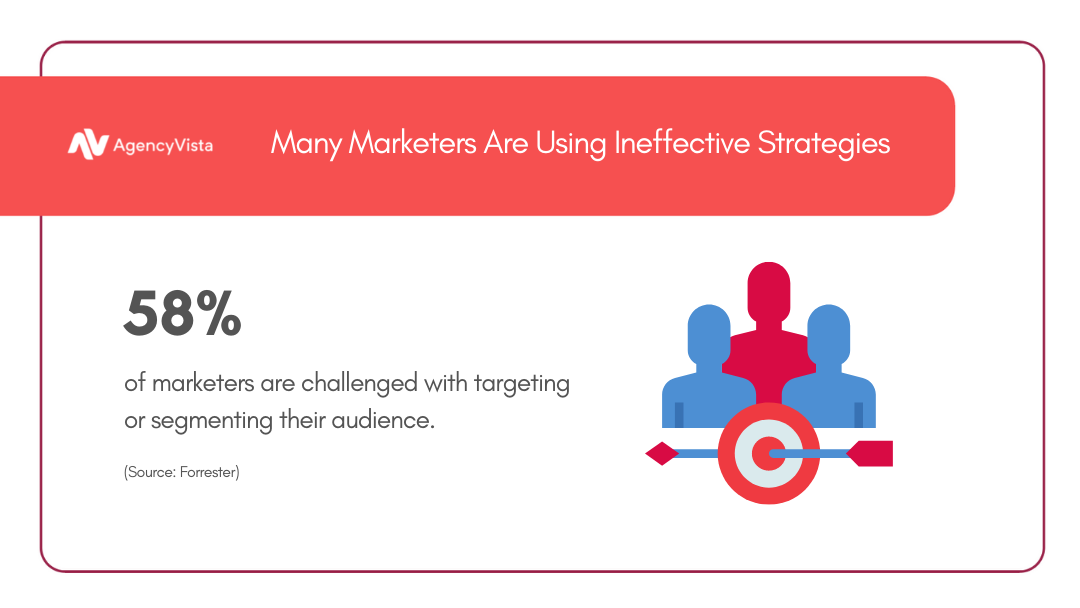September 30, 2021 - Natalya
Advertising Mistakes That Annoy Consumers & How To Fix Them
Advertising mistakes are bound to happen. But, is it entirely the advertiser or marketers fault? A large-scale study of ads on eBay found that brand search ad effectiveness was overestimated by up to 4,100%. A similar analysis of Facebook ads threw up a number of 4,000%. Platform measurement errors dramatically affect the decisions marketers make on their campaign management.
If that isn’t enough to wreak havoc, consumers are increasingly annoyed with online ads. While advertising can be an effective way to convey information about a product to potential consumers, it still can be one of the most annoying phenomena in the world. As a result, today, more and more users are proactively avoiding the daily ad dominance by installing special ad blockers, skipping ads, or paying for ad-free Internet. Here, at Agency Vista, we have decided to explore which advertising mistakes annoy consumers and how to fix them.
Many users want to support high-quality content and have nothing against ads generally, but they are simply tired of intrusive, interruptive, or repetitive ads. Moreover, they are not happy with how companies collect their data for advertising and marketing. The Merkle survey shows that about 50% of adult US internet users confirm that ads help them find the products and services they are looking for, and 44% said this often feels invasive.
Let’s find out which types of ads annoy consumers most and how advertisers can fix that.
The Most Annoying Types of Digital Ads
A survey conducted in July 2019 demonstrated what types of digital ads the US internet users found most invasive and annoying.
- Video ads that play automatically on websites with sound – 66.7%
- Video ads that play automatically on websites without sound – 55%
- Audio ads (on music streaming services or podcasts) – 47.4%
- Ads that show up based on my online searches – 42.4%
- Static images on websites (banner ads) for products I have already purchased – 36.7%
- Ads on social media feed targeted to me based on my interests and behaviors – 36.3%
- Static images on websites (banner ads) for products I have browsed but not purchased – 34.2%
- I do not consider digital ads annoying – 10%
As you can see, two-thirds of US internet users called video ads with sound the most annoying advertising. Auto-playing video ads without sound are second, followed by audio clips on music streaming services.
This conclusion does not mean that it is worth stopping the production of video ads. Advertisers need to work better on the content, user interest, and engagement. Addressing the target audience’s pain points and appealing to emotions is always an excellent approach.
How to Fix Advertising Mistakes or What Consumers Want in Ads
Consumers’ reaction is negative when advertising violates their personal online space or prevents them from doing what they want. However, advertising placed in the proper context and for the right audience allows the brand to attract new customers and return existing ones.
Below you will see a few recommendations for planning an advertising campaign and creating ads to reduce the degree of irritation.
1. Consider the user experience when planning an ad
To correctly choose the format, placement, time, and duration of advertising, it is essential to analyze the user experience, namely the behavior on the site:
- How much time do your users spend online?
- How do they interact with the page?
- How many pages do they view?
- When do they leave the site?
For example, let’s take a pop-up. Pop-ups are annoying by nature. They inevitably interrupt the user experience. One of the ways to reduce irritation is to assess the level of engagement and display a pop-up after viewing a certain number of pages, spending a specific time on the site, and performing targeted actions. Moreover, if you show relevant ads in a pop-up, the probability of irritation is significantly reduced.
2. Perfect your ad frequency
While the frequency of ad impressions helps achieve effective indicators (the necessary coverage and the number of targeted actions), there is a certain point of no return when the effectiveness decreases sharply.

The best tactic for managing the ad frequency is understanding the relationship between the target audience and the brand. It would be best to understand whether your audience needs to be pushed persistently or whether it is worth using more delicate tactics. The main conclusion is that more is not always better.
3. Do not be too invasive
One of the typical advertising mistakes is being too invasive. Marketers conclude that personalized advertising shows the highest efficiency. But to what extent is personalization possible? When can the personalization of advertising have a repulsive effect?
The following ad types feel most invasive:
- Ads related to my recent online searches.
- Ads related to my interests.
- Ads from stores I have visited but not purchased from.
- Ads from brands I have never purchased from.
There is no single rule or standard to make advertising balanced. Do not be afraid to experiment and discover what works best for your brand.
4. Create relevant ads
The relevance of advertising is the degree to which the ad’s content corresponds to the goals and interests of the site visitor. Relevant ads are perceived as less annoying than entirely irrelevant ones. For example, retargeting ads based on previous views and user likes is more relevant and exciting.
When choosing an ad to place on the site, think about whether retargeting ads will be relevant for the user. For example, would it not be better to place an advertising block of an online store selling tools, materials, and related products in the product review or the article “DIY”?
5. Stick to a short ad
When it comes to placing ads in videos, it is worth considering that users will not watch the commercial until the end. Therefore, it is essential to immediately break through the user’s interest in the first seconds in video ads. If a person does not find out what you are offering in 1-5 seconds, the probability of skipping increases to 100%.
First, we attract a potential client’s attention, then we arouse interest in reading further, after which we arouse a desire to possess our product or service, and at the end, we say what needs to be done. Take the AIDA approach! Many marketers find AIDA useful since we apply this model daily, whether consciously or subconsciously when we’re planning our marketing communications strategy.
6. Allow your audience to control the ad display
The most annoying factor for the user and another advertising mistake is uncontrolled or challenging to control advertising — these are banners and videos, which require additional efforts from the user to disable.
The ability to control advertising is one of the primary users’ requirements. However, aggressive types of advertising that interrupt the user experience, distract from the primary task, and force the user to perform the specific action are still classified as the most annoying.
7. Make your ad predictable for the users
Unpredictable and unexpected advertising causes tremendous discomfort for the user. These advertising types include auto-play videos that appear when you go to the web page, banners that appear on the whole screen, and advertisements that suddenly appear between paragraphs of the text in the article.
Still, predictable advertising, easily controlled by the user, easily identified as advertising, causes more trust and less negative emotions.
If your business needs help with ad strategy and campaign management, connect with Agency Vista’s top advertising agencies. They have all the necessary technological solutions to ensure the competent conduct of an advertising campaign and ensure an effective result.
Conclusion
Digital advertising is one of the most effective ways to promote a business. It covers a vast audience of consumers, fully demonstrates products, allows you to communicate directly with customers and get an instant response from them.
At the same time, the irritation, aggression, and resentment that some ads cause can permanently spoil the users’ impression and make them leave the website forever. Avoid the advertising mistakes listed above and deliver ads that audiences want to see. What kind of advertising does not annoy users but motivates them to make purchases? Effective and timely one! Show it at the right time, in the right place, and to the right people.
Grow with the #1 marketing agency network and top destination for businesses to hire
Sign up for Agency Vista, and see why over 50,593 marketing agencies trust us to grow their online presence and foster credible relationships with businesses. We’re free forever, and you can upgrade, downgrade, or cancel any time.
Get Started
Get started free
Setup in minutes
No credit card required

Agency Vista is the new way for brands to find and easily connect with marketing agencies. Explore 50,593 verified profiles and reviews to find the right agency for your business.
Copyright © 2025 Agency Vista LLC. All rights reserved. Lovingly made in NYC.


